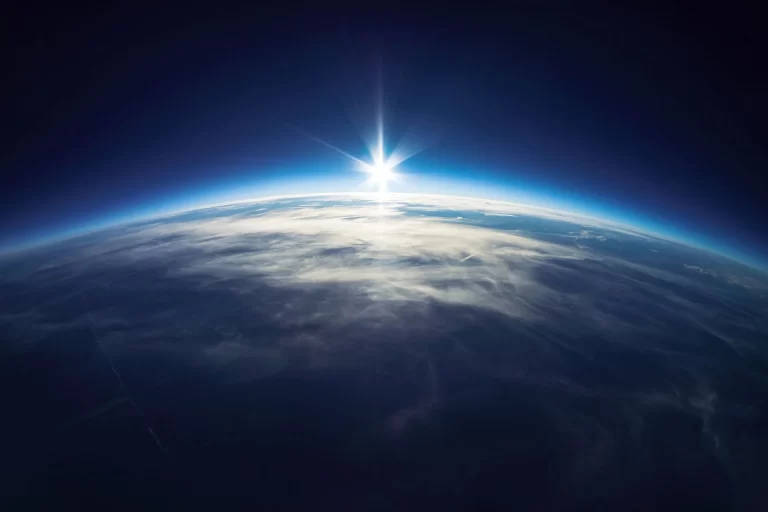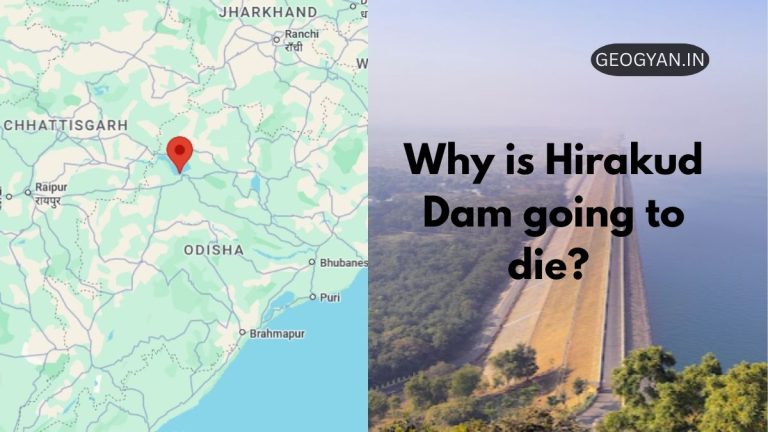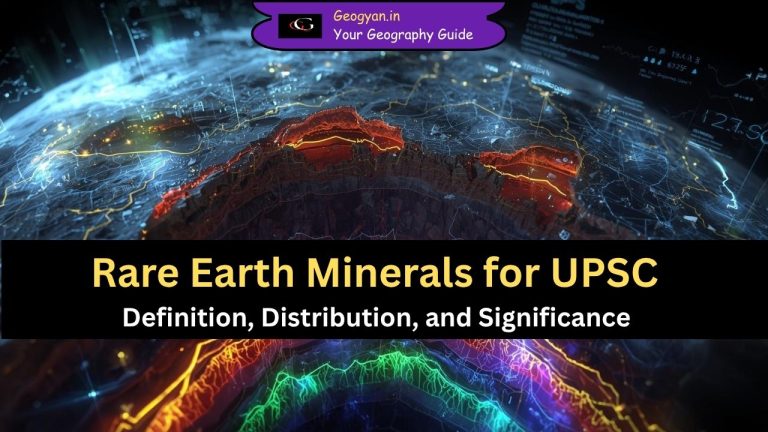Estimated reading time: 8 minutes
Table of contents
The atmosphere has a great thickness around the earth’s surface. Its thickness or height above the earth’s surface is not still well known. However, based on information from sounding, balloons, radar, satellites, rocks- etc., the altitude of the atmosphere is estimated up to 10,000 km from sea level. The air is compressible and is denser near the surface of the earth so that 50 percent of the atmosphere lies below 5-6 km and 90 percent is confined to the height of 29 km.
The atmosphere may be divided into different layers or strata. The layers may be defined based on temperature, pressure and ionization, and chemical properties of the air. The following layers of the atmosphere based on temperature and pressure variation with altitude have been identified.
Troposphere
It is the lowest and densest layer of the atmosphere and closest to the earth’s surface. The height of the troposphere is variable from the equator to the poles and from season to season. It has a maximum (18 km) height near the equator and a lowest at the poles about 8 km. Thus, the average height of this layer from the ground is about 13 km. The maximum height at the equator is because of the convectional movement of the air currents and thus it is also known as the convective region. In the same way, its altitude in summer is higher than in winter.
The troposphere has the following characteristics.
(i) All the weather phenomena such as winds, clouds, fog, dew, snow, precipitation, cyclones, anti-cyclones, etc., are restricted to this layer.
(ii) Temperature declines with the altitude in this layer. It falls at the rate of 6.5°C per km or 1°C for 165 meters. This rate of change in temperature is called as Normal Laps Rate. Thus, temperature along the upper edge of this layer over the equator is found to be lowest (-85o C) and over the poles, it is highest (-45o C) because of variation of altitude from sea level;
(iii) Water vapors and dust particles are found in this layer which are responsible for the development of clouds and storms etc.
(iv) Flying commercial aircraft is common in this layer near the tropopause.
(v) About 75 percent of the total weight of the atmosphere is found in this layer.
(vi) A space scientist ‘Teisserenc de Bort’named this layer as the troposphere.
(vii) Tropos is a Greek word meaning “mixture” or “disturbance”. Thus “Troposphere” means “region of mixing”.
(viii) This layer is also characterized by the inversion of temperature near the earth’s surface, especially in winter.
(ix) The pressure generally decreases with increasing altitude. It is recorded as 500 mb at 5-6 km, 100 mb at 16.5 km, and 10 mb at 28-52 km.
The transition zone or layer at the top of the troposphere, which separates it from the stratosphere, is called the troposphere boundary or tropopause. In Greek, tropopause means “End of Mixture”. Sir Napier Shaw coined this term (tropopause) for the first time. Its height is about 17-18 km at the equator, and 7-10 km at the poles.

Stratosphere
Stratosphere is the next important atmospheric layer over the tropopause. It extends up to 50 km height from the sea level. The credit for the discovery and naming of this layer also goes to ‘Teisserenc de Bort’. It is divided into several permanent layers. Stratosphere means “region of stratification”.
Stratosphere has the following characteristics.
(i) In the lower part of the stratosphere (up to 20 km) the temperature remains almost uniform, winds are calm, and the isotherms are vertical instead of parallel. The fall of temperature halts with the increase in altitude. That is why it is also called as the stratosphere and hence this zone is preferred by civil aviators to fly Jet planes.
(ii) Between 20-35 km in the stratosphere, a zone of ozone gas is found. This gas absorbs the sun’s ultraviolet rays and protects the earth’s surface from sunburn. After 30 km height, the temperature starts to increase with altitude because of the ozone layer. Therefore, the temperature at the upper limit of the layer or stratopause reaches up to 0° C.
(iii) This layer is almost devoid of water vapors and dust particles due to which clouds do not form here. Sometimes, some clouds are formed which are called Mother of pearl clouds or Nacreous clouds.
(iv) Weather phenomena such as storms, precipitation, etc. are almost absent. Only horizontal movement of air may be detected in this layer.
(v) The thickness of the stratosphere is highest at the poles, and sometimes this layer completely disappears above the equator.
(vi) In winter, the stratosphere remains the hottest between 50°-60° latitudes.
At a height of about 50 km from the earth’s surface, there is a transition belt known as stratopause, above which the temperature rises rapidly with altitude.
Mesosphere
Mesosphere is the third layer of the atmosphere that lies above the stratopause. It ranges between 50-80 km above sea level. The main characteristic of the mesosphere is that the temperature decreases, with altitude and reaches up to -38° C at the upper limit (80km) of the mesosphere or mesopause. This layer is characterized by the presence of clouds in high-latitude regions in the summer. These clouds glow in the night because they consist of cosmic dust with high nickel content. These are also known as ‘Noctilucent’ clouds.
Ionosphere
The ionosphere lies over the mesopause. It lies between 80 km to 640 km above sea level. Its upper limit is believed by some scientists to be 500 km and some at the height of thousands of km. The temperature rises once again with height in this layer and reaches 10°C at an altitude of 95 km. The temperature goes on increasing upwards, and it is estimated that at an altitude of 2500 km, it rises to 700°C.
It is an ionized and electrically charged layer. This layer reflects the radio waves of various frequencies on the earth’s surface so that the broadcasting communication system is persisted. This layer consists of different sub-layers with diverse features:
D-layer
It extends between 60 to 90 km from sea level. The main feature of this layer is to reflect the long radio waves (low-frequency waves) to the earth and to absorb short (high-frequency waves) and medium radio waves (medium frequency waves). This layer vanishes at night because it is associated with sunshine.
E-layer
This layer lies between 90 to 130 km height above the D-layer. It also appears with the sunrise because it is formed because of a reaction between ultraviolet photons and oxygen and nitrogen molecules and dissolves in the night. It reflects the short (high-frequency waves) and medium radio waves (medium frequency waves) to the earth and absorbs long (low-frequency waves) radio waves. This layer is also known as the Kennelly-Heaviside layer.
F-Layer
This layer lies over the E-layers and is also known as the Appleton layer. This layer appears at the night and is very much significant for long-distance broadcasting communication as it reflects medium and high-frequency waves on both days and nights. It is also divided into F1 and F2 layers. F1 lies between 145-240 km and F2 between 240-965 km.
Exosphere
It is the uppermost layer of the atmosphere that lies over the ionosphere. It outspreads up to the space. The temperature increases with altitude and is very rarefied in this layer. Hydrogen and helium are predominant gases, and the temperature is very high more than 1000 C. But the efficiency of temperature is not so much as the temperature on the earth’s surface. If an astronaut put out his hand from a satellite orbiting the earth in the exosphere, he would not feel hot.
Stratification of Atmosphere based on Composition
As discussed earlier that our atmosphere is composed of many gases and other elements like water vapor and dust particles. The percentage of different gases in the composition of the atmosphere at certain heights is uniform. But above this limit, the proportion of gases varies at different levels of altitude.
The atmosphere may be divided mainly into two layers based on chemical composition
- Homosphere,
- Hetrosphere
Homosphere
This is the lowest part of the atmosphere which extends up to 88 km from the earth’s surface. In this layer, the proportion of gases at different heights remains uniform. The uniformity of the mixture of gases is the result of turbulent mixing in this region of the atmosphere. It is a most important zone of the atmosphere because atmospheric elements like CO2, O2 water vapors, etc., required for the survival of man, animals, and plants, are found in due proportions.
It is again divided into three sub-levels which are as follows: –
(a) Troposphere, (b) Stratosphere, and (c) Mesosphere. Each of these subdivisions is separated from its adjacent subdivision by a transition belt i.e., tropopause and stratopause respectively.
Hetrosphere
It is named Heterosphere because of the heterogeneity in the chemical and physical properties of the different layers of the atmosphere found in this region. This is the uppermost layer of the atmosphere based on chemical composition. It starts from the Mesopause and ends up in space. The main characteristic of this zone is that the gases are found in heterogeneous proportions at different levels of height.
The gases are no longer a uniform mix because turbulent mixing is negligible. The molecules of atoms of elements found here, tend to separate and arrange themselves in the layers of distinctive composition. Nitrogen, oxygen, helium, and hydrogen, the important light gases, are found in this layer.
These gases are located at different levels from heavier to lighter ones into different layers, i.e., Molecular Nitrogen (90-200 km), Atomic Oxygen (200-400 km), Helium (1100-3500 km), and hydrogen (35 km up to space). The hetrosphere is also known as the thermosphere because temperature increases with height throughout the layer.





























